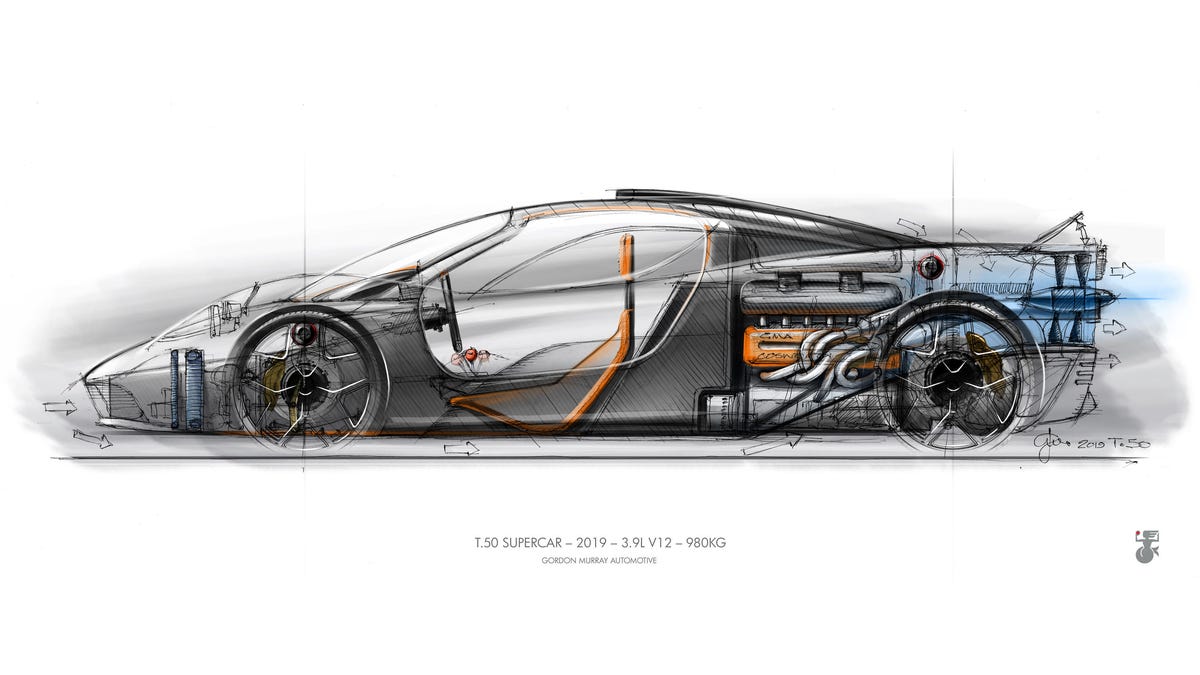Gordon Murray's follow-up to the McLaren F1 will change everything
The Gordon Murray Automotive T.50 will serve as a greatest hits of all of Murray's incredible design ideas.

Pretty much anyone with a passing interest in cars has heard of the McLaren F1. It's still widely regarded by many -- even some 25 years after its introduction -- as the finest bit of automotive engineering ever done.
The man behind it is named Gordon Murray, and before he endeavored to create the F1, he spent decades designing actual Formula One cars, some of the most successful ones in history. Fast forward to the present day, and he's just announced his successor to the McLaren F1, and it looks like a real peach. It's called the Gordon Murray Automotive T.50 and based on specs alone; it'll be epic.
Murray teased the design of the T.50 back in 2017 but we didn't get many details until Wednesday when Gordon Murray Automotive released a video of Murray himself talking about his new $2.54 million technological terror.
To start, the T.50 will feature many of the F1's legendary design features, most notably a naturally aspirated V12 engine (this one revs to 12,000 rpm and will be built by Cosworth) and a manual gearbox. Also making an appearance are the F1's center driving position and flanking seats for passengers. It also promises to be almost shockingly lightweight.
For comparison, the McLaren F1 was ruthlessly engineered to get rid of every extra ounce of weight and tipped the scales at a featherweight 2,425 pounds. The T.50 was engineered with the same attention to detail, but with the advantage of more modern materials and construction techniques, and as such it will only weigh 2,160 pounds -- around 50 pounds more than a Mazda Miata.
One of the most interesting differences between the F1 and the T.50 comes in the way they use active aerodynamics. The F1 was one of the first road cars to use the technology back in the early 1990s, but the T.50 goes further by using the fan car technology pioneered by Murray on his Brabham BT46 Formula One car. This means that the T.50 will use ducted fans to actually physically suck the car down onto the road.
Also, like the F1, there will only be around 100 T.50s built and most of them, if not all of them, are likely already sold -- despite their stratospheric price tag.
Murray's lightness-above-all design ethos remains a refreshing antidote to a world where supercars are growing increasingly heavy and complex, with hybrid powertrains and all their added componentry. There is almost no doubt in our minds that once it's built, the T.50 will go down as one of the greatest cars of all time.

